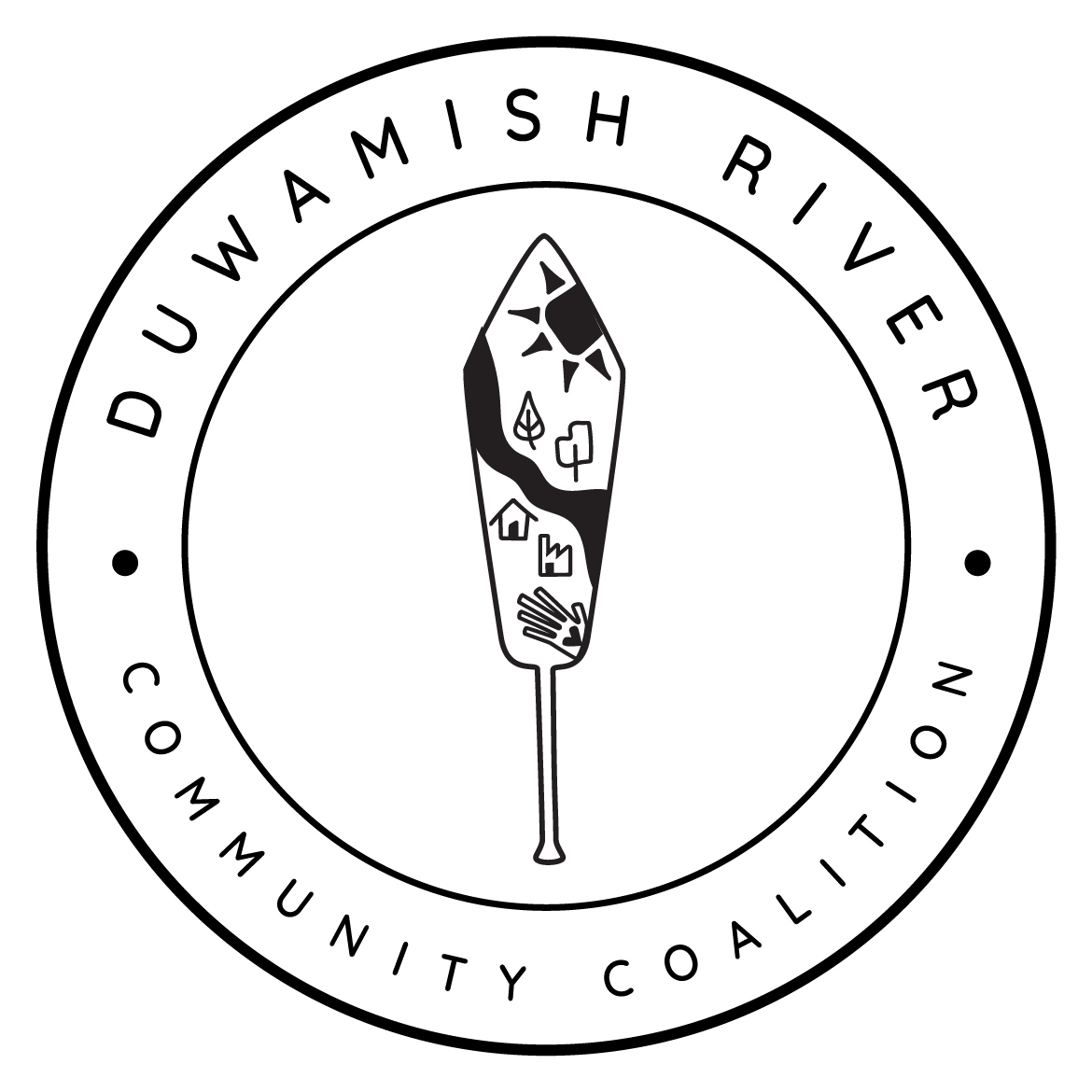𝗖𝗼𝗺𝗺𝗲𝗻𝘁𝘀 𝗼𝗻 𝘁𝗵𝗲 𝗘𝘅𝗽𝗹𝗮𝗻𝗮𝘁𝗶𝗼𝗻 𝗼𝗳 𝗦𝗶𝗴𝗻𝗶𝗳𝗶𝗰𝗮𝗻𝘁 𝗗𝗶𝗳𝗳𝗲𝗿𝗲𝗻𝗰𝗲𝘀, 𝗔𝗽𝗿𝗶𝗹 𝟮𝟭, 𝟮𝟬𝟮𝟭
Learn more about the Lower Duwamish Waterway Roundtable -Updates about the Cleanup
Recap on what the 𝗘𝘅𝗽𝗹𝗮𝗻𝗮𝘁𝗶𝗼𝗻 𝗼𝗳 𝗦𝗶𝗴𝗻𝗶𝗳𝗶𝗰𝗮𝗻𝘁 𝗗𝗶𝗳𝗳𝗲𝗿𝗲𝗻𝗰𝗲𝘀 is all about - A Facebook live event!
DRCC ESD COMMENT LETTER
Thank you for the opportunity to comment on the Proposed Explanation of Significant Differences (ESD) draft document (January, 2021) for the Lower Duwamish Waterway Superfund Site (LDW) which would change the LDW Record of Decision (ROD) that was issued in 2014. We appreciate that you held a public meeting on February 17th on the proposed changes and that you have answered many of our questions. We were especially pleased with the videos in multiple languages on your webinars. Despite the COVID-19 pandemic, DRCC has also been engaging with the community in creative ways including safe in-person gatherings, safe, socially distanced small events, and multilingual social media and video interactions to bring some of this information to the community as well as gather input. We prioritize the voices of those who are directly impacted by these changes and we will continue to do so to ensure that our impacted low-income and black/indigenous/people of color immigrant, refugees, fisher communities who already suffer the greatest exposures and health disparities can be meaningfully informed and engaged.
Although we have done community engagement, we need to mention that this proposed Explanation of Significant Differences comes in very challenging times when our Duwamish Valley community members (an Environmental justice community), are already facing many difficult challenges and inequities reflected on the pandemic. The COVID-19 disparities on Duwamish Valley communities of color piled on top of existing pollution exposures has been measurable. Our community has also been hit very hard by economic hardships as we have a high proportion of service workers who have been under- and unemployed by shutdowns as well as many who are ineligible for federal and local assistance programs due to lack of legal documentation. In addition, our children and youth are experiencing educational disruption that has been difficult for families to mitigate. All these factors lead to very high stress and even trauma that has made accessing technical messaging regarding Superfund concerns especially burdensome.
We have two major concerns about the ESD which we describe below:
Uncertainty about the cancer risk of Benzo(a)Pyrene
DRCC has been in contact with University of Washington toxicologists and scientists who have reviewed the “Toxicological Review of Benzo(a)Pyrene” (BaP) dated January, 2017. EPA looked at 15 research studies. They excluded 12 that did not test for lifetime exposure, and of the three that were left, they eliminated one more due to its use of less stringent protocols and reporting than the two newest studies. The two remaining studies indicated that BaP is 7-times less toxic than the previous standard used by EPA, while the excluded lifetime study indicated BaP is about 1.5-times more toxic than the previous standard (other studies also indicated a higher cancer risk than the new EPA standard). Although the selection of the two newest studies is consistent with EPA guidelines, UW scientists are concerned that inconsistent results across all the studies means that there is still a high level of uncertainty about the cancer risk of BaP.
In addition, health risk estimates for other carcinogenic polycyclic aromatic hydrocarbons (cPAHs) have long been based on the toxicity of BaP. However, more recent science indicates these assumptions may not be protective and researchers who specialize in cPAHs say each chemical needs to be studied individually ("Proposed changes to Portland Harbor Superfund," Oregon State University Superfund Research Program (Nov. 2018)).
In light of this uncertainty about the toxicity of BaP and other cPAHs, DRCC would like to express its concern that the Remedial Action Levels for the LDW are being raised. To us, it appears that EPA is taking a large risk that could affect human health in an environmental justice community for such a small change (0.33% or $1,117,000) in the overall cleanup costs.
Uncertainty about cPAH partitioning from sediments to the water column
DRCC understands that there is no strong correlation between sediment cPAH concentrations and clam tissue concentrations. However, DRCC is concerned that the revised cPAH sediment cleanup levels may impact clam tissue levels as PAHs and other contaminants in sediments dissolve into the water column and change water quality. While DRCC acknowledges that Ecology is responsible for source control on the LDW, we are not convinced that their Green-Duwamish “Pollutant Loading Assessment” model will sufficiently capture the effects of contaminants in sediments on water quality. We request that the EPA require testing of cPAH sediment partitioning to the water column in order to ensure a safe clam and fish consumption scenario. We believe that EPA should conduct testing and model cPAH water column concentrations with the revised sediment RALs before proceeding with the ESD.
Thank you for the opportunity to comment. We ask the EPA to be especially attuned to our concerns and patient with our needs during these trying times. Our Duwamish River must be recovered to standards that support our community, and fishing for future generations. It will be wholly unfair and inequitable to trade a .33% cleanup cost reduction for increased human health risks. We demand health justice, especially for community members
who have been historically marginalized, silenced and burdened disproportionately
with the legacy pollutants giving rise to this cleanup. The health and well-being of our community, the habit and the river is always a priority for us.



